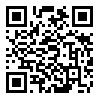Background and Objective: The level of fasting blood sugar (FBS) must be regularly monitored in diabetic patients. Unlike blood, saliva sampling is a noninvasive technique, saliva glucose was evaluated in controlled and uncontrolled type 1 diabetes mellitus (T1DM) children in this study.
Methods: In this cross-sectional study, 40 uncontrolled T1DM and 40 controlled T1DM children were enrolled. The FBS and stimulated and unstimulated saliva glucose was assayed by the GOD-POP method and analyzed by an unpaired Student’s t-test.
Findings: Serum and stimulated saliva glucose levels were higher in the uncontrolled T1DM than that in the controlled T1DM. However, there was no significant difference in unstimulated saliva between the two groups. Serum glucose had a positive correlation with unstimulated (r=0.403; p<0.001) and stimulated (r=0.232; p=0.005) salivary glucose levels. The stimulated and unstimulated salivary flow rate was significantly lower in uncontrolled T1DM.
Conclusion: Stimulated salivary glucose level similar to serum was higher in uncontrolled T1DM than in controlled T1DM children. Therefore, it may be suitable as an alternative for serum glucose to monitor T1DM patients.
| Rights and Permissions | |
 |
This work is licensed under a Creative Commons Attribution-NonCommercial 4.0 International License. |




